
On the 14th - 21st February, we celebrate National Nest Box Week, and this year is no different! National Nest Box week is a celebration of our beautiful British garden birds and focuses on how we can support them.
Why should I put up nest boxes?
With the ever encroaching threat of urban development, wild birds are finding it increasingly difficult to find nesting sites. There's fewer, more fragmented, wild habitats, and our parks and gardens are much tidier than they used to be. We can help by putting up supplementary nesting sites in the form of boxes. They're a great way to support and connect with nature, as well as being a great learning activity for children.
It's recommended to hang your box with enough time before the nesting season to ensure the birds have plenty of time to discover it and decide if it's suitable for bring up their chicks. It's best to put up a box as soon as it's ready - but this week is the perfect reminder before it's too late for this season!
Features of a great nest box
Creating a suitable nest box for birds involves careful consideration of various features to ensure the safety and comfort of chicks and their parents. Here are key features that contribute to a well-designed nest box:
- Size and dimensions: ensure you are providing adequate dimensions based on the target bird species to accommodate the natural behaviours and size of the occupants. The entrance hole size should be appropriate to discourage predators and competitors. Most garden birds will find an entrance hole of 26 - 32mm is ideal
- Materials: Use weather-resistant and durable materials to withstand outdoor conditions and provide long-term shelter. Hardwoods like cedar, or plastic are great options for a budget but the gold-standard is a material called Woodcrete, or WoodStone, which can also offer better thermal properties and protection from predators. Click here to read our our blog all about woodcrete.
- Drainage and ventilation: Boxes with both ventilation and drainage holes can help prevent the build up of water and humidity. This keeps the nest dry and promotes a healthier environment for the chicks to develop.
- Maintenance: Ideally, you should choose a nest box with easily accessible and removable parts to facilitate regular cleaning between nesting seasons, reducing the risk of spreading disease.
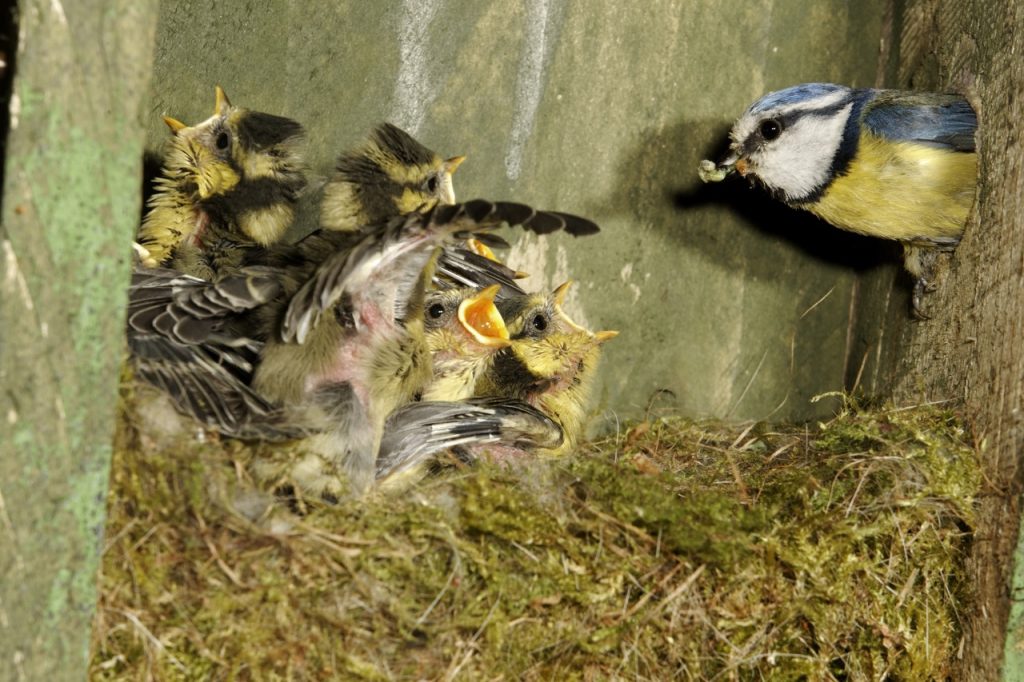
Where should I place my nest box?
From Blue Tits to Black Redstarts, there are many different species that can benefit from a nest box in your garden but they can be picky. As well as the features of the box itself, it's important to ensure that the location of the box is also suitable for your target species. Here's some tips on placement:
- Orientation: Face the entrance hole of the bird box away from prevailing winds and direct sunlight. Typically, a north or east orientation is recommended to protect the nest from the harshest weather. Ideally, you can also direct the entrance slightly downwards to protect against rain.
- Height: The recommended height for mounting is between 2 to 4 meters for most species. This height helps to deter predators and provides a secure location for the nesting birds. If you have inquisitive children, you might also consider it's out of their reach.
- Vegetation: Ensure the box is not completely hidden by vegetation, but at the same time, it should have nearby perches for the fledglings. Open-fronted boxes for robins and wrens should be more hidden by ivy and shrubs to help conceal the entrance. Balance is key.
- Disturbance: Understandably, birds prefer peace and quiet to raise their young. Avoid areas of high traffic and noise, and away from bird feeders where there will be frequent visits from other birds. Unless your target species is gregarious, try to mix and match boxes and keep them spread out to avoid infraspecific competition.
Our Garden Bird Box Favourites
Still stuck for choice? Here's a selection of some of our favourite nest boxes by species to help you decide. You can check out the full range on our website here.
General Purpose - Schwegler 1B Bird Box
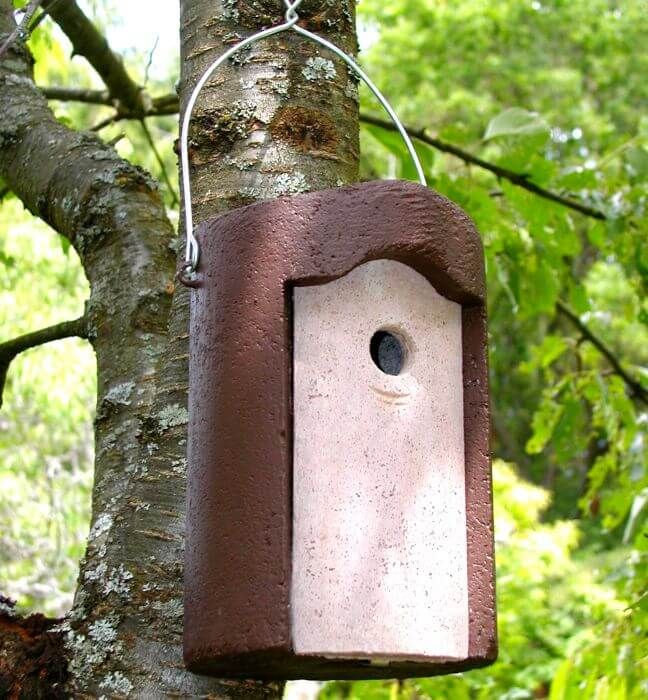
Schwegler boxes are thought to have the highest occupation rates of all nest boxes and are carefully designed to mimic natural nest sites and provide a stable environment for rearing young. The Schwegler 1B box is available with a 32mm entrance suitable for Great, Blue, Marsh, Coal, and Crested Tits, Redstarts, Nuthatches, Pied Flycatchers and Sparrows. You can also purchase a box with a smaller 26mm entrance for Blue, Marsh, Coal and Crested Tits, or an oval entrance which lets more light into the chamber and makes it more suitable for Redstarts.
Open-Fronted - Vivara Pro WoodStone Barcelona
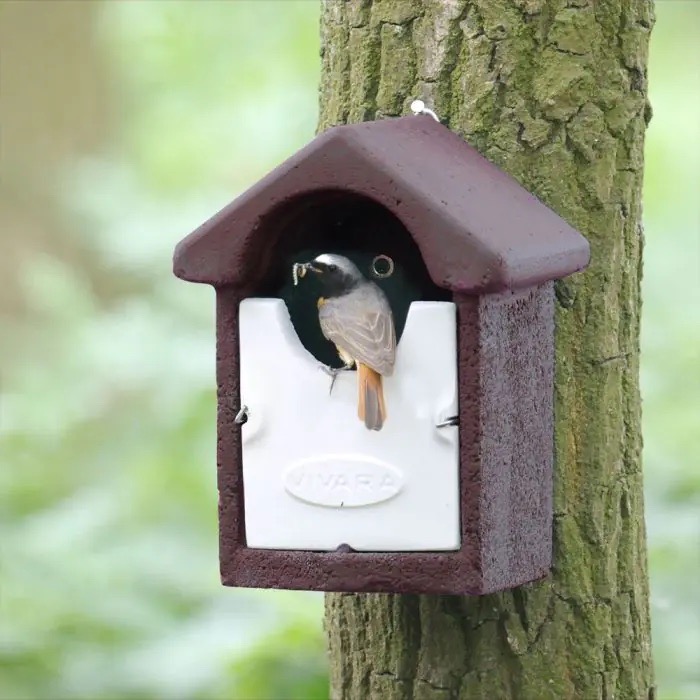
The Barcelona box is available in brown, green or grey to suit your style. This open-fronted design is ideal for Robins, Wrens, Spotted Flycatchers, Pied and Grey Wagtails, Song Thrushes and Blackbirds. It's constructed from WoodStone, which is similar to Woodcrete and the front panel is removable for easy cleaning between nesting seasons. It is more likely to be used by robins and wrens if hung at a height of roughly one metre, and in dense bush or ivy.
For Starlings - Vivara Pro Starling Box
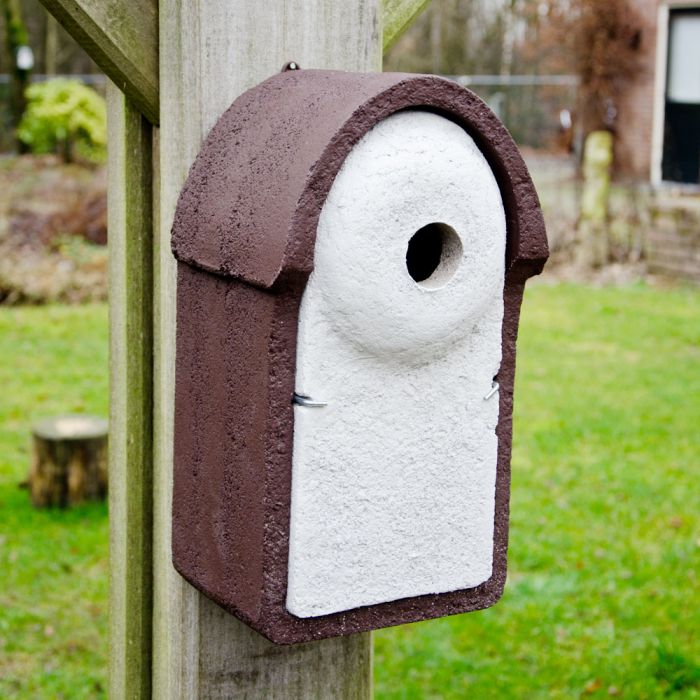
Starling (Sturnus vulgaris) numbers have been in dramatic decline since the 1970s, and is red listed on the BTO Birds of Conservation Concern. Populations have declined by a massive 54% from 1995-2020. They are a larger species, so are excluded from using the general purpose boxes. Starling boxes should have a 45mm entrance hole and they prefer to breed close to each other, so it's recommended to put up a few of them at a height of at least 2.5m. The Vivara Pro Starling box is made of sturdy WoodStone and have a removable front panel for cleaning.
For Sparrows - Schwegler 1SP Sparrow Terrace
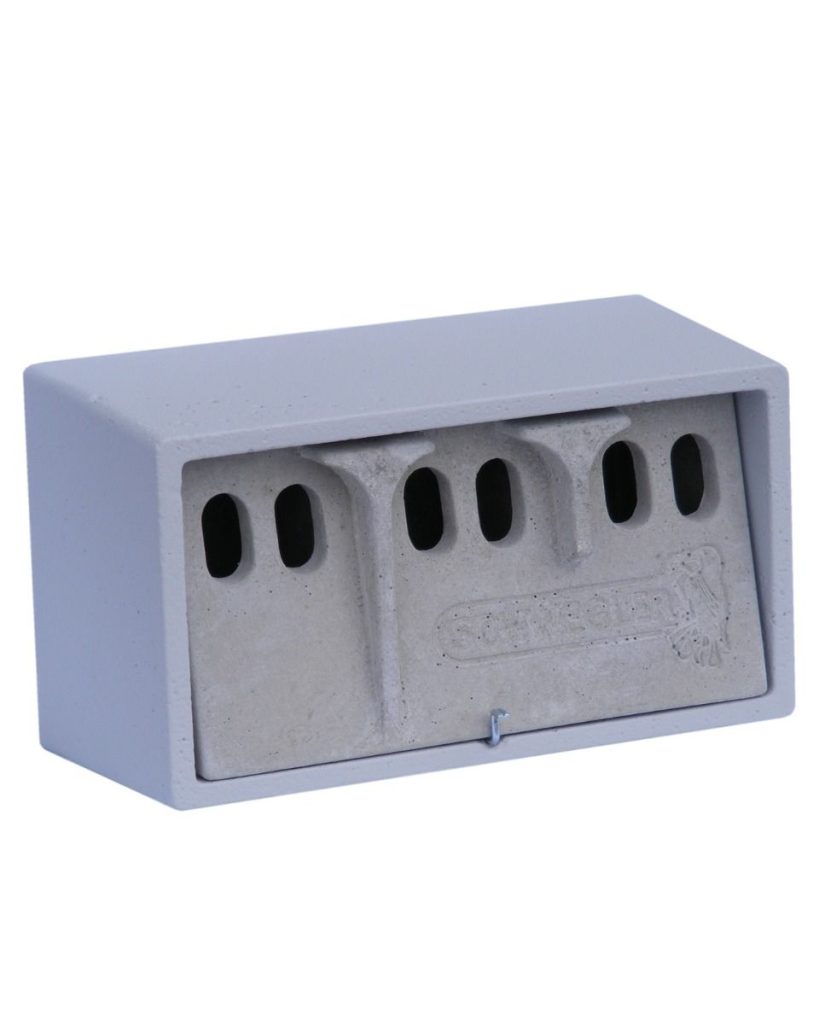
Another species red listed by the BTO, the House Sparrow (Passer domesticus) population declined by 60% in urban and suburban areas between the 1970s and 2000s, most predominantly in the South and East of England. It highlights the importance of providing nest sites for these species in parks and gardens.
Sparrows are a very gregarious species, so prefer to nest in colonies. For this reason, you will often see sparrow 'terraces' of multiple nests grouped together. The Schwegler 1SP is a great example, and also features two oval entrances to let plenty of light into each of the three nesting chambers. It should be mounted on a wall - either using the screws and wall plugs provided or by building into the wall itself. It is available both as brown, and grey.
For Swifts - Genesis Swift Boxes

Swifts (Apus apus) are known for their amazing feat of spending all their lives on the wing, only ever landing to nest. They have evolved tiny legs, and can't fly from stationary or a run, which means they have very specific requirements for their nests and must 'fall' out of their nest into flight. Swift boxes should be mounted under eaves, or at a height of 6-7 metres, with a clear flight path below. We love the Genesis Swift nest boxes due to their unique construction from Magnesium Oxide (MgO) board, which is waterproof, non-hazardous, lightweight and mould proof. There is an undercoat of insulating paint to help maintain the temperature inside, and can be painted in any colour of your choosing.
Swifts are a gregarious species, and this box is available as a single, double of triple nest option. You can also mount a swift call system, which will help the birds find the nest boxes and increases the likelihood of occupation.
For Tawny Owls - Eco Tawny Owl Box
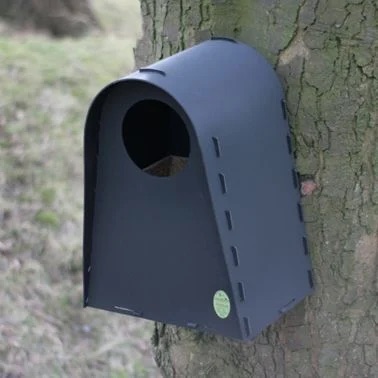
If you're lucky enough to have some trees or woodland in your garden, then you might have heard the haunting too-whit-too-woos of a few Tawny Owls (Strix aluco) at night. They are the the UK's most common owl species, but were Amber listed on BTOs Birds of Conservation Concern in 2015. The reason for their decline in population is as yet unknown, but habitat fragmentation has been put forward as one of the possible causes.
Good boxes for Tawny Owls successfully mimic large tree cavities. They should be mounted on a large, deciduous tree in a secluded position. We love the Eco Tawny Owl box because of it's unique construction from low-density polyethylene board, made from 100% recycled plastic. The internal nesting chamber is FSC certified strand board, which can be removed at the end of each season for maintenance and easily replaced if necessary.
For Solitary Bees - Green&Blue Bee Brick
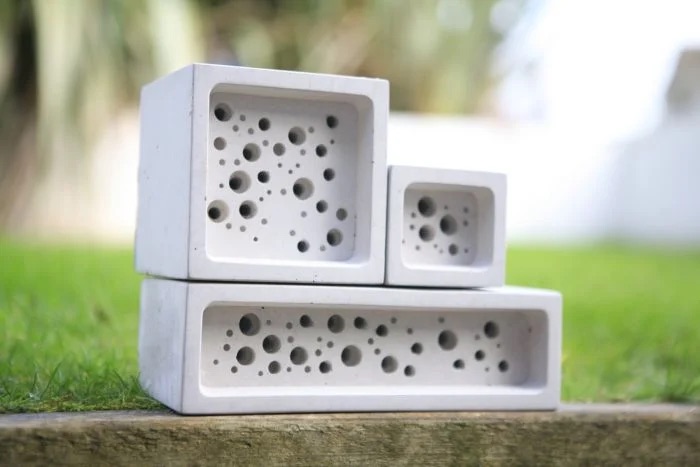
Nests aren't just for birds - there are plenty of species who can also benefit from some easy additions to your garden. Solitary bees make up 90% of the UK's 267 bee species. They are known to be more effective pollinators then their social cousins, and face the same environmental pressures of habitat loss and use of chemical pesticides.
Available in several different colours, shapes and sizes, the Award-Winning Green&Blue Bee brick is a stylish way to provide a nesting site and is made from up to 75% recycled material from the Cornish China Clay industry. The holes provide a safe place for the bees to lay their eggs, before the entrance is sealed. The larvae will develop over winter and emerge as young bees in Spring.
Solitary bees are even safe to encourage around pets and children, as they are very unlikely to sting, and their stings aren't painful either.
Need more advice? Check out www.nestboxweek.com or speak to our experts by calling 01451 833181 or email [email protected]


